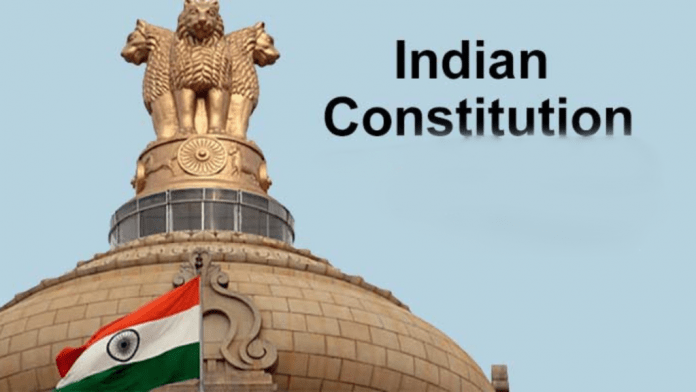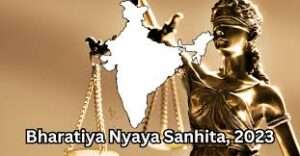
This article has been written by Abdul Basit Kudalkar (graduated from Mumbai University)

Introduction
Constitution is the supreme law of any country. The Indian Constitution was a result of the ideals of the freedom struggle and the vision of a better future for the country. While the machineries empowered by the Constitution act within their set limits it is important to have check and balance. This helps in safeguarding the spirit of the Constitution. It is primarily upon the Court to ensure adherence of the State to the Constitution. In an earlier post, some of the constitutional interpretation doctrines were explained with necessary case laws. Here are a few more doctrines applied by the Courts.
The doctrine of Occupied Field
The Union and the State List provide with the subjects on which the Union Parliament and the State Legislature could make laws respectively. This prevents encroachment upon the powers of another legislature. This doctrine suggests that when the Union makes a law on a particular subject and thereby occupies the field, the State Legislature(s) cannot enact any law for that field. If the state legislature does so, the state legislation becomes unconstitutional to that extent.
If there are two legislations — one of the Union, another of the State — on the same subject, the Union law prevails unless the State legislation is not assented by the President to be enforceable in the state. However, the Parliament has the authority to overrule such state legislation.
Doctrine of Colourable Legislation
The colourable legislation doctrine was aptly described in K C Gajapati Narayan Deo v. State of Orissa. The facts of the case were as follows:
- The validity of the Orissa Agricultural Income Tax (Amendment) Act, 1950 was in question.
- The Act levied a huge tax on agricultural income.
- It was argued that the taxation law actually aimed at reducing the net income of intermediaries so that the compensation to be paid to them under the Orissa Estates Abolition Act, 1952 could be minimal.
The apex court upheld the act. It observed that the Act was enacted under Entry 46 (taxing of agricultural income) of List II. The tax rate how much ever unjust is within the state’s competence to legislate upon. Moreover, under Entry 42 of the third list, the state may adopt any principle of compensation for the acquired property. Thus, the Act was not a colourable legislation. Supreme Court further elaborated on the criteria for applying the doctrine. It could have been colourable if proved to be within the domain of another law-making body.
In simple words, the concept of colourable legislation means when a legislature functions within its limits of powers while enacting a statute has actually transgressed those powers. Such transgression is not evident on the surface but on proper examination, it is revealed to be present in disguise. The main question to be decided by the courts is whether the law in question was within the designated domain of the particular legislature or not.
This becomes more clear with another case, K T Moopil Nair v. State of Kerala, where the Travancore Cochin Land Tax Act 1955 was challenged. The Act imposed a five-figure amount as tax upon those with an annual income of a reasonable four-figure amount which was many times higher than the actual income. The Court found the act in violation of Articles 14 and 19(1)(f) as it attempted to confiscate the property in the guise of taxing the citizens.
The Doctrine of Implied Powers
The Constitution only broadly specifies the objectives to be achieved and gives the outline of the powers that need to be exercised by the legislature. It does not give all the details regarding further implementation. Therefore, the legislature makes laws for the execution of the power or that is incidental to such power. Such laws would be constitutional too.
In other words, all the powers needed for the performance of certain powers or restrictions given in the Constitution are also implied to be conferred by it. This makes those implied powers also constitutional.
The Supreme Court has observed that the doctrine should be applied carefully by the courts. This is obvious because it is important to check whether the implied powers exercised as a part of the main power are within the limits of the Constitution.
The doctrine of Incidental and Ancillary Powers
It is similar to the implied powers doctrine. The Constitution provides incidental and ancillary powers to the law-making bodies. Where such powers are not given it is deemed that the legislature has those powers for legislative function. The principle behind the doctrine is the liberal interpretation of the Constitution.
Examples:
- Entry 93 of the Union List and Entry 64 of the State List mention the law-making power of the Parliament as well as the State Legislature respectively, for the offenses against laws made with respect to any of the matters in the respective lists. The law-making body cannot delegate the essential powers further except such subsidiary powers to the lower agencies for smooth functioning and proper execution of the procedure.
- The power to impose tax also includes the power to enact laws related to checking tax evasion.
This interpretation of including incidental and ancillary powers within the main law-making power should not be unreasonable and for the sake of placing any such powers under it. Therefore, power to levy tax does not empowers the legislature to enact law on confiscation of goods.
Hence, like the doctrine of implied powers, this doctrine needs to be applied with caution and within the constitutional limits.
Doctrine of Implied Prohibition
This doctrine is opposite to the implied powers doctrine. The legal maxim — expressio unius est exclusio alterus — express mention of one thing implies exclusion of another. In countries like Australia and USA, the Constitution has empowered the union legislature to make laws on certain subjects. The subjects not listed to it are left for the state legislature to make laws. This means the Centre is prohibited from making laws on those subjects not assigned to it.
The doctrine is not in practice in India because the Constitution clearly distinguishes the domain of the union and the state legislature regarding making laws.
Conclusion
These are important doctrines related to the interpretation of the Constitution. The idea of keeping the spirit of the Constitution intact should not remain an emotion but must be brought into action also. This is the reason for development of the above doctrines. It is the duty of the courts to apply them judiciously for safeguarding the Constitution and its basic intent of securing the interests of the citizens.






